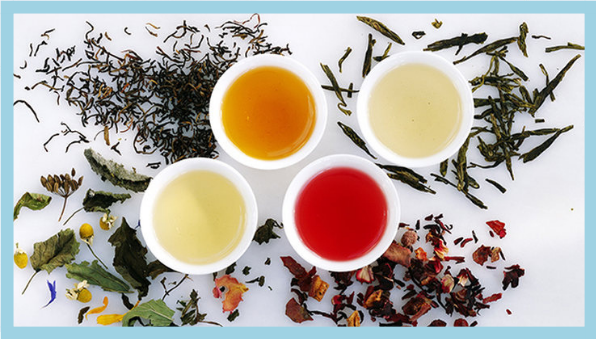Tea is the most pleasant drink that all people admire. It contributes to a good health making you younger and helping lose weight. There are hot, warm, and cold tea. Tea is distinguished according to several types and sorts.
Types of tea from Tea and Coffee Cafe
Black tea
- It is internationally acknowledged. This tea can be, either with additives or without them.
- The distinctive feature of black tea is that it is full oxidated. Oxidation of tea can take from 2 weeks to a month.
- Dried leaves have a brown or black color.
- When brewing tea up it may be orange and dark red. Meanwhile, black tea has a sour taste.
How to use black tea?
This type of tea can be made with or without sugar with adding of a slice of lemon or not. Black tea can be combined with non-fat cream or milk.
Green tea
Unlike black tea, green is not completely oxidized. Freshly torn tea leaves are left in the open air so that they fade slightly. Then they are dried and rolled into a kind of small pellets. Thanks to this method, there is no strong tea fermentation.
How is green tea useful?
Green tea is very useful, it contains a lot of vitamin C, PP and group B. Green tea improves mood, deteriorates bacteria, removes heavy metals from the body (lead, mercury, zinc) and even helps fight cancer.
How to brew green tea up?
In order to brew green tea up, it is recommended to pour tea leaves into a cup, pour boiled water. The recommended water temperature is not over 90 °C. Making time lasts for 5 minutes. Tea turns yellowish green with a pleasant smell and mild taste. Green tea is consumed mostly without sugar.
White tea
White tea undergoes even less fermentation than green. White tea is tea buds that are covered with a white nap.
Such tea is harvested at the beginning of spring. People engaged in picking up tea are not allowed to eat onions, garlic and various spices before work in order not to spoil leaves’ flavor. After young leaves have been picked up, they are dried – first in the sun, then in the shade. Then, the leaves are set to dry in the oven. Then they are packed.
The peculiarity of this tea is that it does not curl.
Why is white tea specific?
White tea, like green, has useful vitamins C, PP, B and many other nutrients. This tea is recommended to use for those people who have lowered immunity and are suffering from chronic fatigue.
How to brew white tea?
White tea has a delicate and tender taste. China is the best country to brew a white tea up. The water should be clean, fresh and not boiling. Water temperature should not exceed 85 °C. For 150 ml of water, you need to take from 3 to 5 grams of leaflets.
Red tea
The top leaves of red tea are picked up early in the morning. After the tea leaves have been picked up, they are dried, then they are laid out in boxes and fermented for 24 hours.
Is red tea useful?
As all types of tea, red tea is very good for health. It enhances immunity, has a good restorative effect on the body. This drink includes a large rate of potassium. Tea is recommended to those people who have low blood pressure.
How to make red tea?
You need to slightly boil water to make tea. The temperature of boiled water should not exceed 90 °C.
Then pour water into the cup with the tea leaves, and immediately drain it to remove the damp smell. Pour boiled water again. Fill the cup with boiling water and cover it with a towel. For tea not to lose its flavor, pour the tea through a strainer into another dish.
After brewing, the tea gets a dark red color and an unusual taste – it is sometimes even sweet. Tea shops in Ottawa like to use this type of tea to attract more and more visitors by a fascinating aroma.
Loose tea producing countries
Teas are usually divided according to the country in which the tea leaves were grown. It is worth noting that the main share of world tea exports accounted for only a few countries.
A quarter of the world’s volume of tea is supplied by the birthplace of this drink – China. This country produces both popular black and green teas, as well as such exclusive types of tea as puer, oolong, yellow and white teas.
India ranks second in the list of world tea suppliers. From tea leaves grown on Indian plantations, in most cases, black tea, sliced or granulated, is produced. The share of green tea production is negligible. But in this country, they can boast of the production of such elite tea as Darjeeling.
The teas of Ceylon (Sri Lanka), which account for 10% of world exports of this product, are very close to Indian in their qualities.
Japan specializes in green tea, the lion’s share of which goes to meet the needs of the population of the country itself, and only a small part is exported.
Among African countries involved in the production of black tea, the largest export volumes can be referred to as Kenya. But the tradition of growing tea bushes, established by English colonists as early as the 19th century, has been preserved in countries such as South Africa, Uganda, Zimbabwe, Cameroon, etc.
